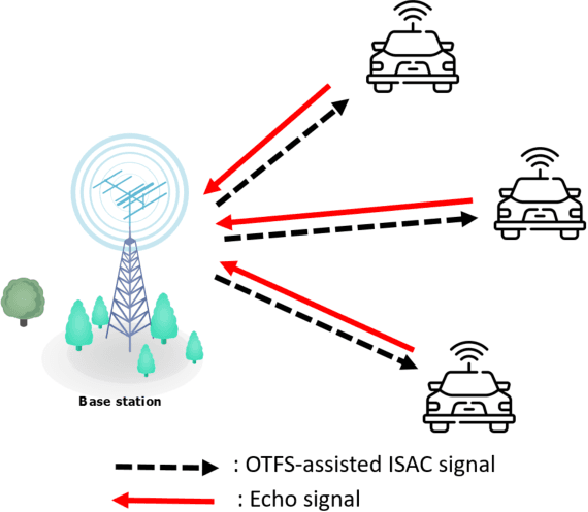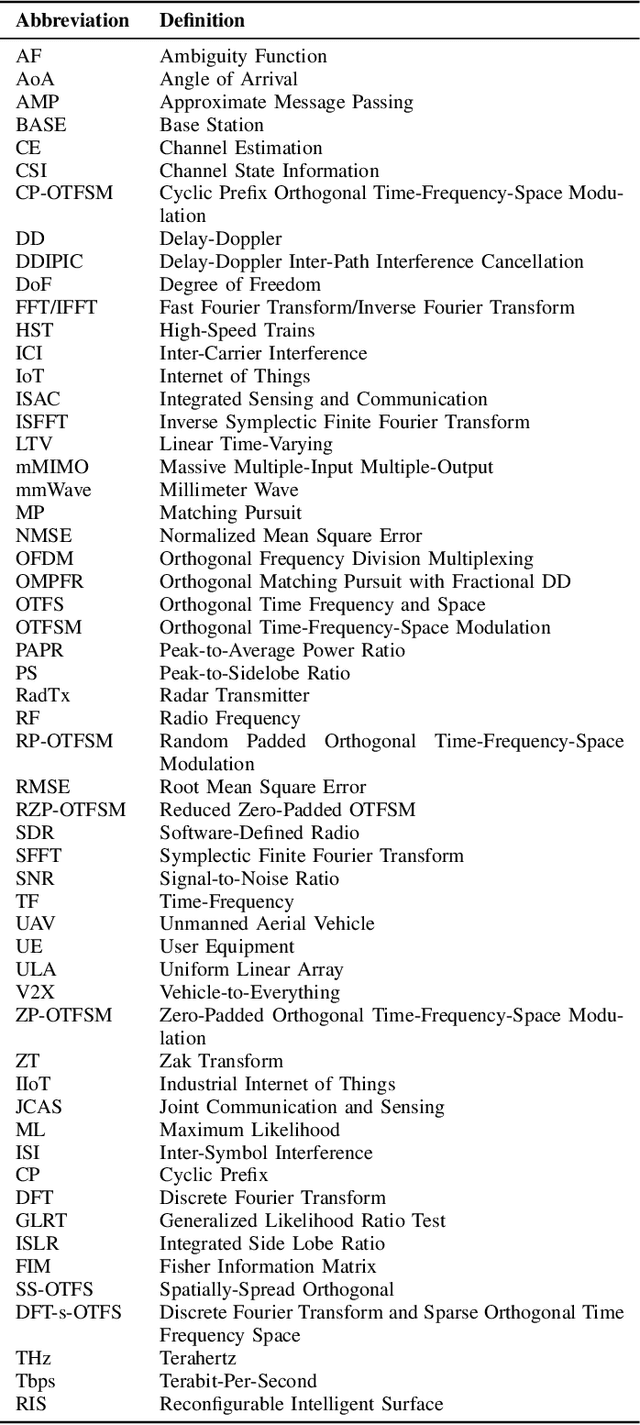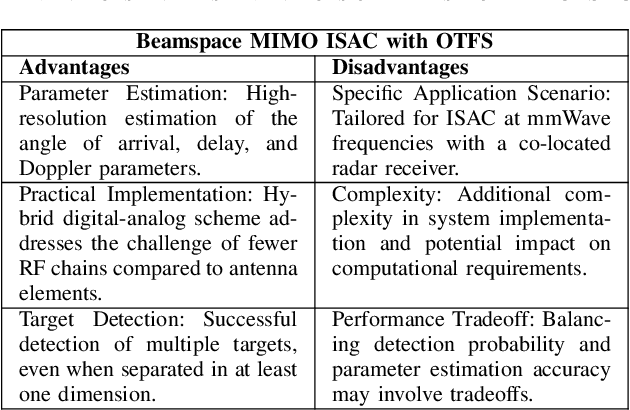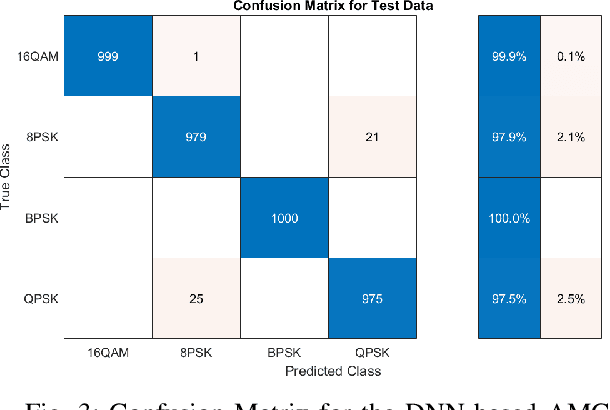Eyad Shtaiwi
Orthogonal Time Frequency Space for Integrated Sensing and Communication: A Survey
Feb 15, 2024



Abstract:Sixth-generation (6G) wireless communication systems, as stated in the European 6G flagship project Hexa-X, are anticipated to feature the integration of intelligence, communication, sensing, positioning, and computation. An important aspect of this integration is integrated sensing and communication (ISAC), in which the same waveform is used for both systems both sensing and communication, to address the challenge of spectrum scarcity. Recently, the orthogonal time frequency space (OTFS) waveform has been proposed to address OFDM's limitations due to the high Doppler spread in some future wireless communication systems. In this paper, we review existing OTFS waveforms for ISAC systems and provide some insights into future research. Firstly, we introduce the basic principles and a system model of OTFS and provide a foundational understanding of this innovative technology's core concepts and architecture. Subsequently, we present an overview of OTFS-based ISAC system frameworks. We provide a comprehensive review of recent research developments and the current state of the art in the field of OTFS-assisted ISAC systems to gain a thorough understanding of the current landscape and advancements. Furthermore, we perform a thorough comparison between OTFS-enabled ISAC operations and traditional OFDM, highlighting the distinctive advantages of OTFS, especially in high Doppler spread scenarios. Subsequently, we address the primary challenges facing OTFS-based ISAC systems, identifying potential limitations and drawbacks. Then, finally, we suggest future research directions, aiming to inspire further innovation in the 6G wireless communication landscape.
Mixture GAN For Modulation Classification Resiliency Against Adversarial Attacks
May 29, 2022



Abstract:Automatic modulation classification (AMC) using the Deep Neural Network (DNN) approach outperforms the traditional classification techniques, even in the presence of challenging wireless channel environments. However, the adversarial attacks cause the loss of accuracy for the DNN-based AMC by injecting a well-designed perturbation to the wireless channels. In this paper, we propose a novel generative adversarial network (GAN)-based countermeasure approach to safeguard the DNN-based AMC systems against adversarial attack examples. GAN-based aims to eliminate the adversarial attack examples before feeding to the DNN-based classifier. Specifically, we have shown the resiliency of our proposed defense GAN against the Fast-Gradient Sign method (FGSM) algorithm as one of the most potent kinds of attack algorithms to craft the perturbed signals. The existing defense-GAN has been designed for image classification and does not work in our case where the above-mentioned communication system is considered. Thus, our proposed countermeasure approach deploys GANs with a mixture of generators to overcome the mode collapsing problem in a typical GAN facing radio signal classification problem. Simulation results show the effectiveness of our proposed defense GAN so that it could enhance the accuracy of the DNN-based AMC under adversarial attacks to 81%, approximately.
 Add to Chrome
Add to Chrome Add to Firefox
Add to Firefox Add to Edge
Add to Edge